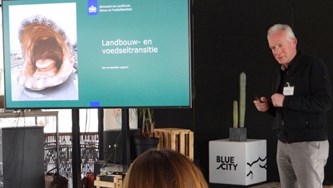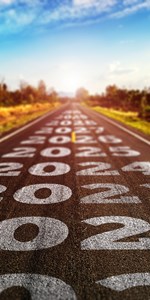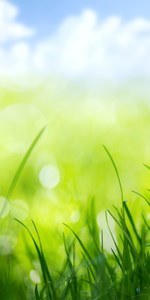Let's be honest. Do you know what you're eating? And do you know that about a third of all CO2 emissions come from our food system. How do we make more conscious choices? And what role can institutional investors and insurers play in this?
The National Protein Strategy
This third and final part of our series on The (inter)national food transition focuses on the National Protein Strategy . In 2018, the European Union called on member states to develop their own strategy to make Europe less dependent on imports of protein-rich crops such as soy.
Two years later, in 2020, then LNV Minister Carola Schouten presented a National Protein Strategy that should increase our self-sufficiency rate of new and vegetable proteins over the next five to ten years.
During a knowledge session of the IRBC covenant for the insurance sector, which will continue until 1 July, our food policy was central. At a historic location, in the heart of Rotterdam, some thirty insurers, asset managers, NGOs and pension funds discussed our food policy with the government. Place of action: Blue City, a HUB for fifty circular companies that are all experimenting with the circular economy.
Monstrous task?
Renze Brouwer has been working at the Ministry of Agriculture, Nature and Food Quality since 2000. "Back then, the problem was similar to today's," he says. "At that time, the Sand Areas Reconstruction Act became the guideline to tackle the agricultural challenges. Due to the lack of a solid financial instrument, little came of this. Now we are facing a major food transition."
He shows a telling picture of a huge fish with an incredibly large mouth, which he calls exemplary of the problem. Next to it is the question: A monstrous task? "The image reminds me of our current food system. Literally everything goes into it, from fertilizer and animal feed, produced on the basis of soy, to crop protection and veterinary medicines. But ultimately, the output of this large-scale input is harmful to our ecosystems."
"Seven million kilos of soy arrive in our ports every year"
Vegetable proteins
He shows another picture that looks a lot like a metro map, but shows the soy flows in our country. This shows that Europe is extremely dependent on imports from countries outside the EU. Eighty percent of the protein-rich raw materials come from North and South America and the majority of them (93 percent) are destined for animal feed. "No less than seven million kilos arrive in our ports every year," says Brouwer.

Looking for replacements
The aim of the National Protein Strategy (NES) is therefore to increase our self-sufficiency rate and become less dependent on soy imports. Among other things, by looking for replacements. Of course in a sustainable way. In the NES, five tracks are mentioned for this:
1. Increase the cultivation of vegetable proteins. Think legumes and chickpeas.
2. Innovation and development of alternatives, for example via a 3D printer and cultured meat.
3. Using insects for feed and food.
4. Reuse of residual flows, including from breweries, for the feed.
5. Increase the consumption of vegetable proteins.
Meat tax
These goals of the NES are a tough task, according to Brouwer. "At the moment we consume sixty percent animal and forty percent vegetable protein. We want to get to 50-50. That doesn't seem like such a big step, but changing consumer behavior is particularly difficult. Especially because there is little political support for, for example, levying a meat tax. Moreover, things will only change when there is more supply of plant-based products."
"Politicians don't like to interfere with what the public eats"
Stop stunting
One of the attendees raises his hand. "That could take a while then. With regard to climate, it has also taken about thirty years before we have tackled the source: fossil fuels. How long does it take to tackle the meat eating?"
"Politicians don't like to interfere with what citizens eat," Brouwer replies. "But if we want to influence consumer behaviour, we need pressure. For example, no longer stunting with meat would help."
Future of agriculture
He cites Canada as an interesting example. "Canada has a lot of knowledge in-house anyway, but also puts a lot of money into the development of proteins. That is what we must do. We need to invest a lot to encourage arable farming to grow protein-rich leguminous crops, which also bind nitrogen. And that's already happening. At the Agrofood project in Groningen (Fascinating) we will soon learn how we can create vegetable proteins and how we can extract proteins from different crops." LNV has also submitted a programme to the National Growth Fund, together with WUR and ZLTO, for the economic valorisation of the vegetable protein chain (EPPIC).
Meat substitutes
According to Brouwer, the business community has already started to move. "Parties in the food industry have known for a long time that they have to participate in the new development. Even meat processors are investing in factories for meat substitutes."
The question, in a company of investors, can of course not be missed. What should financial institutions do? Or maybe not do it anymore? "They need to invest less in the production of animal protein and more in that of plant-based protein. In addition, I cordially invite insurers to talk to us, so that they gain more insight into the further development of the food transition."
This was the third and final part of our series on the (inter)national food transition. In the first part, Marjolein Brasz (Food Valley) spoke about our action perspective. And in part two, Jouke Knol (Ministry of LNV) explained what the Boer-tot-bord strategy entails.
Was this article useful?


